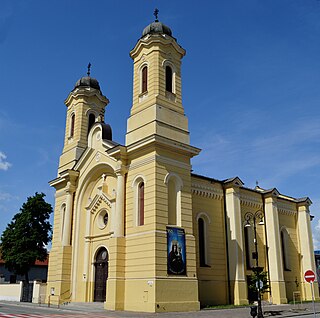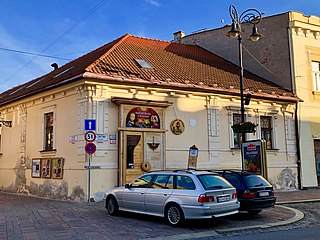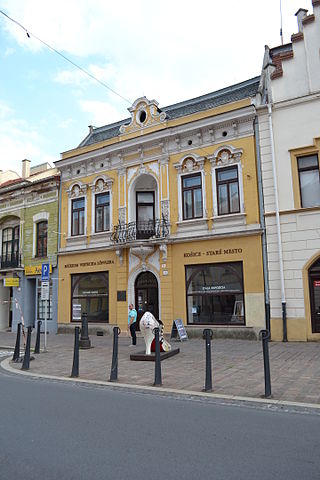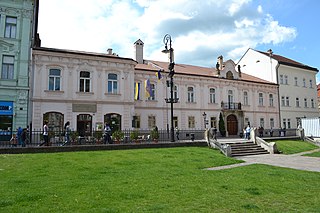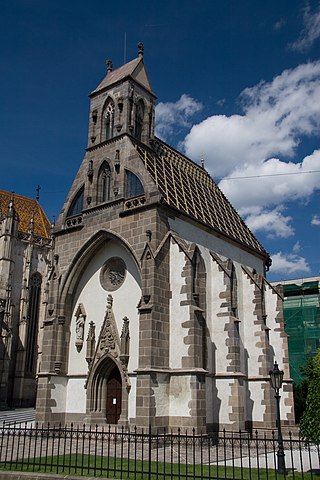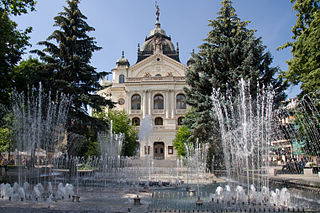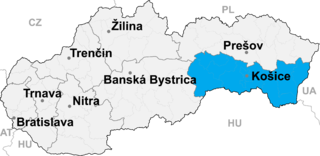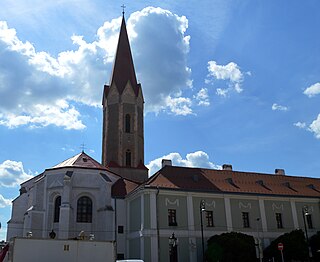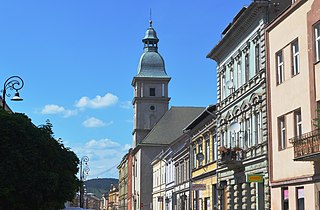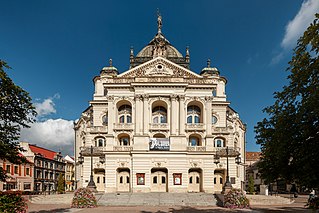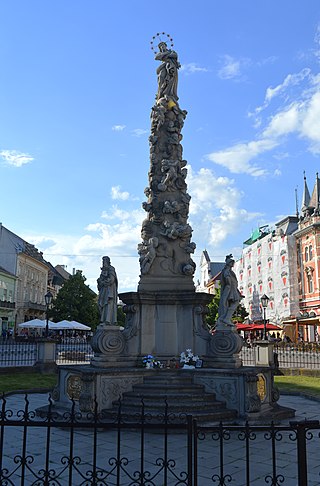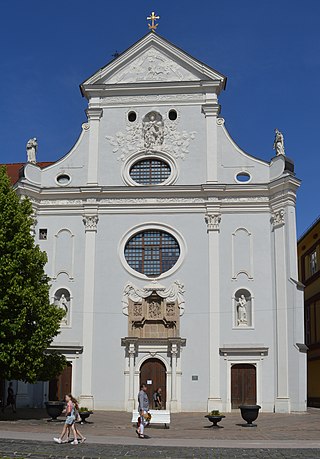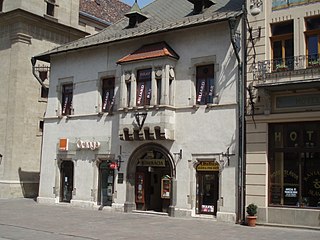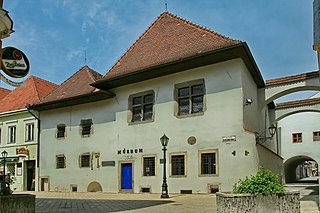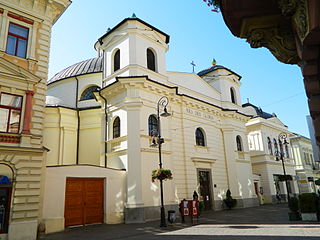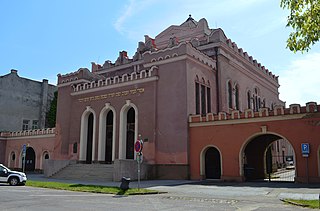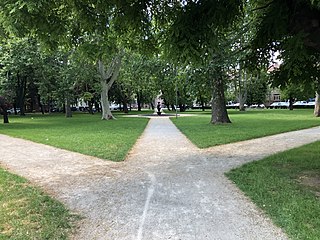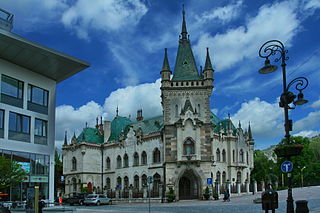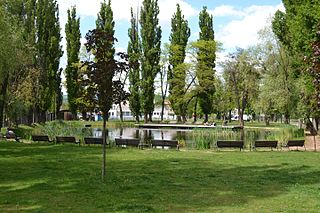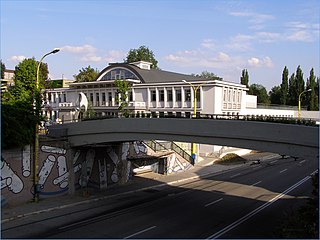Self-guided Sightseeing Tour #3 in Košice, Slovakia
Legend
Guided Free Walking Tours
Book free guided walking tours in Košice.
Guided Sightseeing Tours
Book guided sightseeing tours and activities in Košice.
Tour Facts
4.6 km
41 m
Experience Košice in Slovakia in a whole new way with our free self-guided sightseeing tour. This site not only offers you practical information and insider tips, but also a rich variety of activities and sights you shouldn't miss. Whether you love art and culture, want to explore historical sites or simply want to experience the vibrant atmosphere of a lively city - you'll find everything you need for your personal adventure here.
Individual Sights in KošiceSight 1: Múzeum obetí komunizmu
The Museum of the Victims of Communism is an audiovisual museum in Košice on Moyzesova Street. It was founded on June 24, 2021 as the first of its kind in Slovakia. It was created in honor of the memory of the victims of communism. It allows visitors to look into the stories of imprisoned and tortured survivors.
Wikipedia: Múzeum obetí komunizmu (SK), Website, Facebook, Instagram, Youtube
Sight 2: Chrám Narodenia Presvätej Bohorodičky
The Greek Catholic Cathedral Church of Virgin Mary's Birth is located at Moyzesova Street in the historic centre of Košice, Slovakia. It is the cathedral of the Eparchy of Košice of the Slovak Greek Catholic Church.
Wikipedia: Cathedral of the Nativity of the Mother of God, Košice (EN), Website, Url
Sight 3: Pozostatok mosta
Košice city fortifications is a fortress system of gradually built walls, water ditches, parks, rondels, barbacans, bastions, ravelins and glacis, defending the city of Košice. The emergence of urban walls is dated to 1260 - 1290. In the 15th century the fortification was supplemented in connection with the development of military equipment - firearms and artillery. In the 16th century with increased Turkish danger, the walls were rebuilt from the rondel system to bastion. Kosice has become one of the most important Habsburg forts. Often, however, they got into the rebel hands, which was not due to the fragility of the fortifications, but by the political will of Košice burghers. In the 17th century, the improving of the bastion system continued, and the advanced separate citadel has also been added to the recurring uprisings. At the beginning of the 18th century, the construction of Ravelin and Glacis reached the development of the Košice city fortifications. Due to the transfer of the center of gravity of Habsburg combat operations outside the Košice region, the importance of the fortifications passed. In the years 1783 - 1840 it was gradually demolished. To this day, there are some parts or whole fortification objects that are testimony of the importance and maturity of this developed defense system in a pan -European context.
Sight 4: Bábkové divadlo
The Košice Puppet Theatre is a professional puppet theatre in Košice.
Sight 5: Múzeum Vojtecha Löfflera
The Vojtech Löffler Museum is a museum of contemporary art located in Košice. The museum was established by the city district of Košice - Old Town on December 17, 1993. The museum presents an exhibition of the important Košice sculptor Vojtech Löffler. The exhibition was dedicated by Vojtech and his wife Klára Schönherz to the city.
Wikipedia: Múzeum Vojtecha Löfflera (SK), Website, Facebook, Website
Sight 6: Arcibiskupský palác
The Archbishop's Palace of Košice, Slovakia, is a rococo-classical building, formerly the home of Austro-Hungarian Emperor Franz Joseph I.
Sight 7: Saint Michael Chapel
The Saint Michael Church is a Gothic style church in Košice, Slovakia. Originally a chapel, the building became officially a church after its reconstruction in 2006.
Sight 8: Saint Elisabeth Cathedral
The Cathedral of St. Elizabeth, also called Saint Elizabeth Cathedral, is a Gothic cathedral in Košice, Slovakia. It is the largest church in Slovakia and one of the easternmost Gothic cathedrals in Europe.
Wikipedia: Cathedral of St. Elizabeth (EN), Website, Youtube
Sight 9: Informačné centrum mesta Košice
Visit Košice is a regional tourism organization concentrated in Košice. The organization operates the official Visitor Center of the city, located at 59 Hlavná Street.
Sight 10: Spievajúca fontána
The Singing Fountain is a fountain on Hlavná Street in Košice. It is located between the Košice State Theater and St. Elizabeth's Cathedral. When playing music, the splashing of water and the color lighting of the fountain are regulated based on the musical frequencies of the music playing. The fountain consists of 22 water circuits, which are controlled by various sludge pumps. Their power is regulated by frequency converters located directly in the engine room. Its uniqueness also lies in the fact that it is the oldest singing fountain in Czechoslovakia. It was built in 1986 and twenty years later it was reconstructed to its current form based on the design of doc. Ing. arch. Juraj Koban, PhD. It has more than 200 songs in its repertoire, which make the moments spent in the metropolis of the East more pleasant for the inhabitants of the city and tourists. From morning to evening, you can enjoy calm and relaxing music on the playing fountain, and in the evening you can enjoy well-known film compositions or classical music.
Sight 11: Regional information point
Košice Region Tourism is an organization dealing with destination management for the region of the Košice Region. The organization focuses on marketing and development of the destination, but also on the creation of tourism products.
Sight 12: Hadik-Barkóciho palác
Hadik-Barkóci Palace is a building located in Košice, on Hlavná Street.
Sight 13: Kostol Nanebovzatia Panny Márie
The Church of the Assumption of the Virgin Mary or commonly known as the Dominican Church at Dominikánske námestie is the oldest church in Košice, Slovakia, and also the oldest preserved building in the town.
Wikipedia: Church of the Assumption of the Virgin Mary, Košice (EN), Website, Url
Sight 14: Kostol sv. Michala archanjela
The Church of St. Michael the Archangel is a Baroque church in Košice, in the Old Town district on Mäsiarska Street.
Wikipedia: Kostol svätého Michala archanjela (Košice) (SK), Website, Url
Sight 15: National Theatre Košice
The National Theatre Košice is situated in the centre of Košice, Slovakia.
Sight 16: Fontána znamení
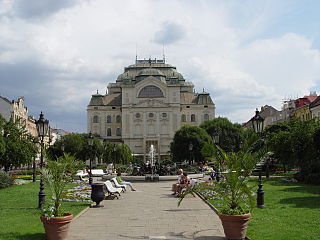
The Fountain of Signs is a fountain on Hlavná Street in Košice. It is located between the Košice State Theater and the Immaculata sculpture.
Sight 17: Immaculata
The Plague Column or Immaculata is a Baroque plague column in Košice, Slovakia.
Sight 18: Čákiho-Dezőfiho palác
The Čáki-Dezőfi Palace is a building in Košice standing on the corner of Hlavná and Poštová streets.
Sight 19: Kostol sv. Antona Paduánskeho
St. Anthony of Padua Church or commonly known as the Franciscan Church or the Seminary Church at Hlavná ulica is the second oldest church in Košice, Slovakia.
Sight 20: Kostol Najsvätejšej Trojice
The Church of the Holy Trinity or commonly known as the Premonstratensian Church, or initially the Jesuit Church, is a Roman Catholic church in Košice, Slovakia. It is an example of Baroque architecture in the city and was the site of the martyrdom of three saints in 1619.
Sight 21: Levočský dom
The Levoča House is a late Gothic residential building in Košice, dating back to the 15th century, located on the corner of Hlavná and Univerzitná streets.
Sight 22: Miklušova väznica
The Mikluš Prison in Košice is a set of two interconnected Gothic burgher houses from the first half of the 15th century, which were adapted at the beginning of the 17th century for the needs of the city prison and torture chamber. It served for these purposes until 1909, then it was administered by the Upper Hungarian Museum, which planned to install an exhibition of the city's history in it. This happened only after a comprehensive reconstruction in the war years 1940 - 1942. The exhibition is located on Pri Miklušova Prison Street.
Sight 23: Kalvínsky kostol
The Calvinist Church at Hrnčiarska ulica in Košice, Slovakia was initially an army store-house.
Sight 24: František II. Rákoczy
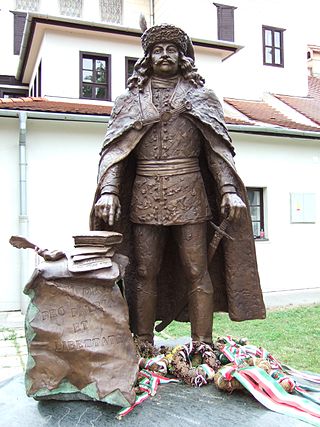
The Rákóczi's sculpture in Košice is a bronze statue of Francis II Rákóczi, situated in the Executioner's Bastion in the historical centre of Košice, Slovakia. It is placed in front of Rákóczi's memorial house, a replica of his house in the Turkish exile in Rodosto.
Sight 25: Katova Bašta
The Executioner's Bastion is the largest and best-preserved building monument from the medieval fortifications of the city in Slovakia. It is located in Košice and its origin dates back to the 15th century.
Sight 26: Evanjelický a. v. kostol
The Evangelical Church or Protestant Church in Mlynská ulica in Košice, Slovakia is a Neoclassical church building of the Evangelical Church of the Augsburg Confession in Slovakia, a Lutheran denomination. It has Sunday services at 09:30 and 18:00 in Slovak, and at 08:15 in Hungarian.
Sight 27: Nová ortodoxná synagóga
The New Orthodox Synagogue is an Orthodox Jewish congregation and synagogue, located at Puškinova Street near the historic centre of Košice, Slovakia. The congregation worships in the Ashkenazi rite.
Sight 28: Park na Drevnom trhu
The park on the Wood Market is a park in the Old Town district of Košice. It is located between the streets of Anti-Fascist Fighters, Roosevelt Street and Hay Market.
Sight 29: Jakabov palác
Jakab's Palace is a neo-Gothic building in Košice standing on the corner of Mlynská and Štefánikova Streets, near the former bed of the Mill Race.
Sight 30: Jeneyho palác
Jeney's Palace is an Art Nouveau building in Košice located on Štefánikova Street. The building was built in 1902 and was declared a national cultural monument in 2005.
Sight 31: City Park
The City Park is the largest public park in Košice in the Old Town district. It is located between Staničné námestie, Štefánikova Street, Thurzova Street, and Rumanova Street.
Sight 32: Kunsthalle
Kunsthalle Košice, is a building that serves as an exhibition space for visual arts and workshops. It is historically the first kunsthalle in Slovakia.
Share
How likely are you to recommend us?
Disclaimer Please be aware of your surroundings and do not enter private property. We are not liable for any damages that occur during the tours.
GPX-Download For navigation apps and GPS devices you can download the tour as a GPX file.

